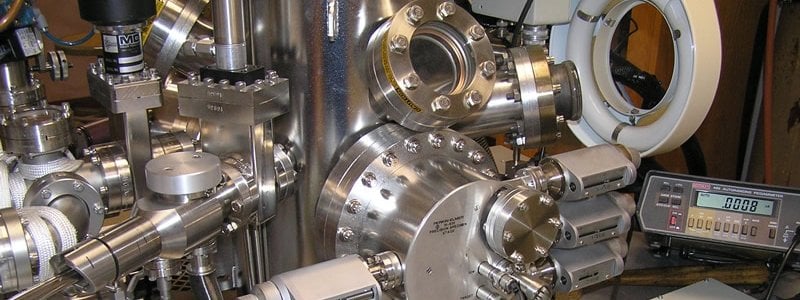Auger
The Perkin Elmer PHI-660 Scanning Auger Microscope provides sputter depth profiles of surfaces.
The Perkin Elmer PHI-660 Scanning Auger Microscope provides sputter depth profiles of surfaces.

The Perkin Elmer PHI-660 scanning Auger microprobe can be used for the compositional analysis of specimen surfaces using Auger electron spectroscopy (AES). The probe depth of AES is on the order of only a few atomic layers, making it possible to execute compositional analysis with sub micron spatial resolution. AES is capable of detecting elements with atomic number three through fifty, but it is more sensitive to lighter elements.
Additionally, the depth distribution of components at and near the surface can be determined using AES in conjunction with inert ion sputtering. The microprobe software package includes AugerScan, for auger electron acquisition and data manipulation, and AugerMap, for scan control and element mapping.
This facility utilizes a scanning Auger microprobe, which allows for analysis of surface composition using Auger electron spectroscopy (AES) with a submicron spatial resolution. This microprobe is used to produce:
The depth distribution of components at and near the surface can be evaluated by using AES in conjunction with inert ion sputtering.
The Phi660 was upgraded by RBD Instruments in 2002. The upgrade includes new computer control boards, cabling and software. The modern Windows-based software package includes AugerScan for auger electron acquisition and data manipulation as well as AugerMap for scan control and elemental mapping.
Michigan Tech offers many undergraduate and graduate courses related to materials characterization.
One of these relates to surface methods.
Coursework and hands-on laboratory experiences explore physical and chemical properties governing surface processes and the appropriate analysis techniques used to study interfaces and surface chemical reactions. Topics include principles of physical chemistry and materials science for understanding and applying modern surface analysis.